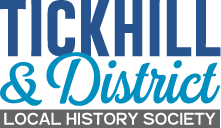

Doncaster Races
Doncaster has had a racecourse owned by the Corporation since at least 1600, but in the early days, at least, all did not necessarily run smoothly. In 1615 the following problems were outlined in civic records:
‘For as much as it plainely appereth by divers accidents and inconveniences which tendeth to the great damage and prejudice of the Corporacon, and quarells and other inconveniences have by occasion of this race been stirred upp, therefore, for the preventing of sutes, quarrels, murders and bloodsheds that may ensue by the contynuinge of the said race, it is agreed that the stands and stoopes shall be pulled upp and employed to some better purpose, and the race to be discontinued.’

In spite of this ‘righteous wrath’, racing continued under the Corporation’s patronage and in 1776 the classic St Leger race was founded by Colonel St Leger, then living at Warmsworth Hall. By this time the races were held in September and the town became renowned for the many social activities arranged during Race Week making Doncaster the centre of fashionable life in the north of England for a few days. Edward Miller in his 1804 ‘The history and antiquities of Doncaster and its vicinity’, wrote:
‘For nearly half a century, they have been, and may now be considered as the best meeting of the kind in the north of England; as it is generally allowed, that a greater number of families meet each other at Doncaster races, than assemble together at any other place in the kingdom upon a similar occasion. In the mornings the gentlemen’s time is usually employed in hunting, and every evening exhibits a play at the theatre, and a brilliant ball at the mansion-house.’
How did Doncaster Races impinge on life in Tickhill? Those with spare time and funds certainly took advantage of the leisure opportunities during Race Week as shown, for example, in the following extract from a letter dated 27 September 1805 written by the Revd. Thomas Francis Twigge (Vicar of Tickhill 1784-1821) to a student, John Fiott, at St John’s College, Cambridge:
‘My wife and I have visited the Stand, at Doncaster Races, the 3 last days, and also the Repository of fancy works, and have been very well amused. Having no young friends staying with us, we did not go to any of the balls, but returned hither to a late dinner every day. Salvin accompanied us one day, and we likewise carried one of our young neighbouring female friends every day. The meeting was not so numerous, as it generally is, but very easy and pleasant and there was one party, consisting of Mrs Williams, an old friend of mine, with her son and daughter, and Mrs Ramsden, with her eldest son (your friend) and daughter, whom we joined every day and who were particularly pleasant to us…My wife and I are both so well pleased with this meeting, that we intend to go to it every year, if we can, and shall be very glad to have your company another year, if you are so disposed.’
(Quoted by permission of the Master and Fellows of St John’s College, Cambridge)
A second connection with Doncaster Races is through the Lumleys of Tickhill Castle: Richard Lumley was a Steward at Doncaster racecourse and bred horses at Tickhill Castle Stud Farm, as had his father Frederick; horses based here had been successful during Race Week. For example, the bay colt Newminster won the St Leger in 1851, was bought by Richard Lumley three years later and spent two seasons at the Stud Farm. Among earlier horses which won at Doncaster Races was Tramp, bought by Frederick Lumley then based at the Stud Farm 1822-30, and Catton, who sired the 1826 St Leger winner Tarrare. For more details of these horses see the Thoroughbred Heritage website.